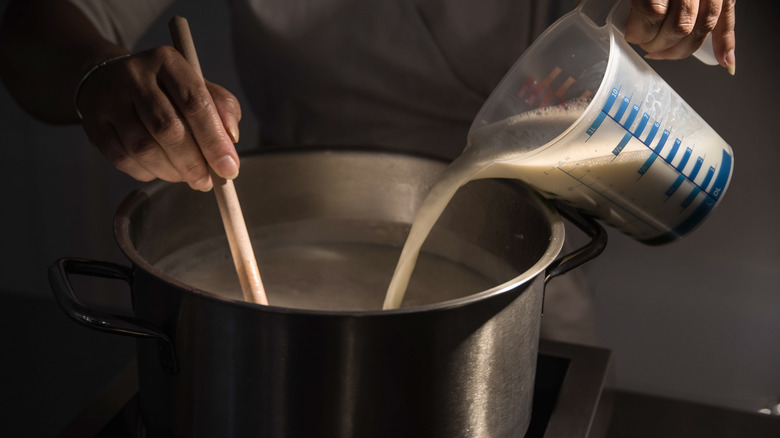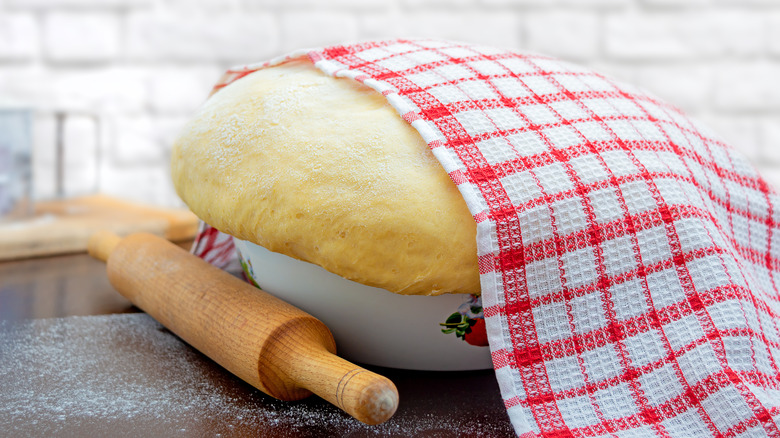Is It Really Necessary To Use Scalded Milk In Some Recipes?
In your baking or cooking, you likely have come across the direction to scald milk for a recipe. You may have wondered if it's a necessary step or an outdated notion. Hopefully, you went ahead and scalded the milk because no one likes a failed baking project. If you did, you'd be happy to learn your time wasn't wasted because there is a scientific basis behind this quirky instruction.
In the past, most likely a recipe would call for scalded milk because pasteurizing milk was still a relatively new market requirement. Thus, cooking milk to 180-185 degrees Fahrenheit — or the point when little bubbles appear around the edge of the pan and steam rises — was a simple safety measure to reduce the risk of disease. However, as the CDC informs us, the mandatory pasteurization of milk (for sale or distribution) has been a law in the U.S. since 1987, spurred by the research of bacteriologist Alice Evans (via The Scientist).
And so, since safety is no longer a reason to do so, why do some recipes still call for the additional step of scalding milk today?
Why you shouldn't skip the scalding step
It turns out that heating milk to 180 degrees Fahrenheit (close to boiling but not quite) creates a chemical reaction called denaturing. This process breaks down the scalded milk's whey protein. In some baking recipes, if the protein is not modified in a dough, for example, it can hinder the gluten's interaction with the yeast. The heat dismantles the milk molecules' structure, releasing peptides, amino acids, and sugars, which the yeast feasts on (via Savory Experiments).
In addition to this necessity for proper yeast activation in a dough, hot liquids — scalded milk included — are excellent carriers for flavor. For example, infusing dairy with garlic for mashed potatoes or vanilla in custards makes for a tastier outcome. Warm milk can also help incorporate the butter into a batter and speed up the rising process when making bread.
Be sure to keep a watchful eye while scalding milk, as milk burns quickly. It also boils over rapidly and is a hassle to clean up. Furthermore, Food Network advises reducing the heat of your milk to less than 139 F before adding the yeast, or you will kill it.
Following this seemingly persnickety process of scalding milk will provide significant results when baking, such as nuanced flavors and silkier custards. In addition, Busby's Bakery agrees that scalded milk makes a more tender crumb and lighter biscuits.

